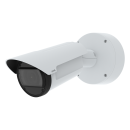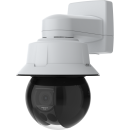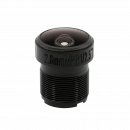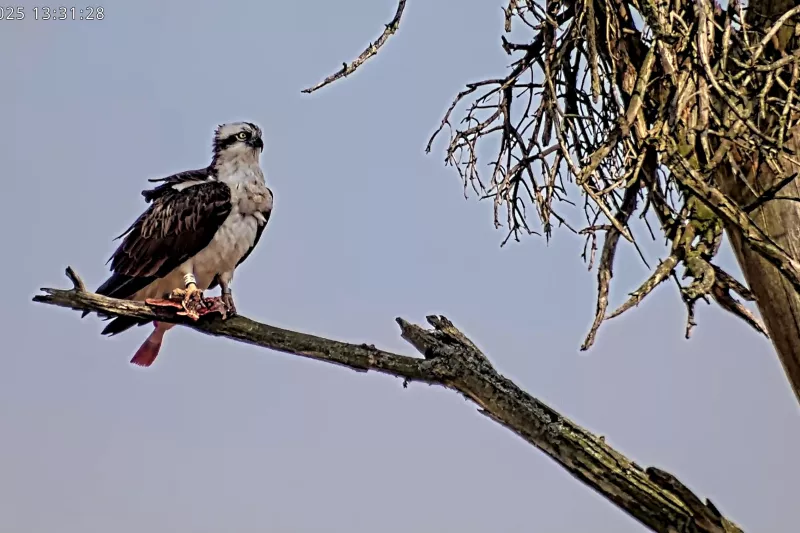
Supporting conservation as resurgent ospreys cause flutter of excitement
Following a successful restoration of an unusual peatland habitat, Cumbria Wildlife Trust attracted a bird species not frequently seen in the area. Working in partnership with Axis, it sought a way to both protect and publicize the wildlife through remote monitoring in a difficult, exposed environment.
Until Cumbria Wildlife Trust bought Foulshaw Moss in 1998, the 350-hectare peat bog – a vital carbon store – had been replanted as a dense pine forest. But trees had harmed the area’s drainage and its biodiversity, as well as reducing the area’s ability to sequester carbon. Now, with the Trust’s help, the site has been restored to peatland, allowing the area’s sphagnum moss to return, and its wildlife – including the once-absent osprey – to thrive once again.
“When the pines were planted after the Second World War, there wasn’t the knowledge we have today about peat bogs,” explains Keziah Taylor, Nature Reserve Assistant Officer. “The change is so exciting. We’ve restored a rare habitat, a big carbon store, and now Foulshaw Moss is a home to so many things – including a species that was previously extinct in the area.”
The Trust’s restoration works removed the forest – though the restoration works deliberately left a little behind. “There’s no woodland anywhere now,” says Keziah, “apart from two isolated trees, just standing dead wood.” These lone sentinels in the otherwise bare peatland proved a perfect habitat for the osprey, leading the first of a series of breeding pairs to make the bog its summer home in 2013.
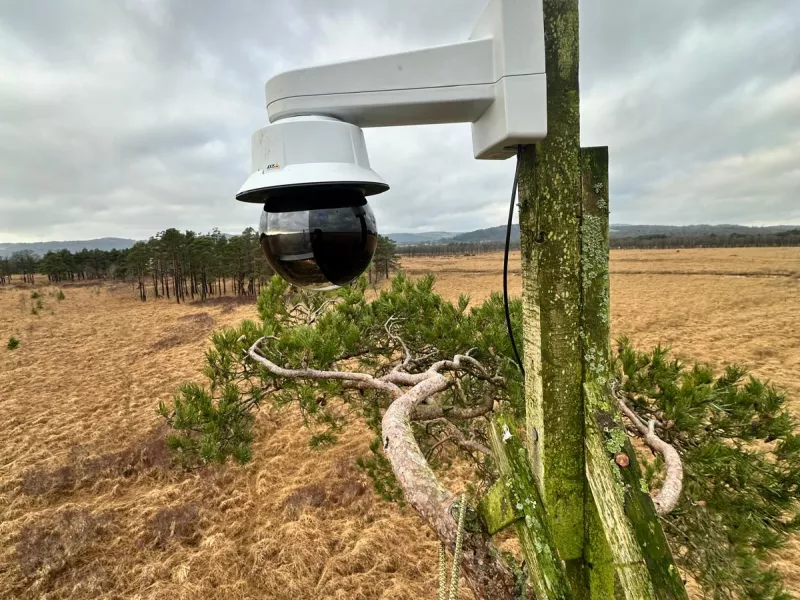
The perfect imperfect environment
“Ospreys love to pick really dead trees. They’ll pick the worst of the worst,” continues Keziah, emphasizing the ospreys’ need for visibility and isolation. “You get, on average, three chicks a year. One in three has a successful migration, and then they come back to breed close to home. Breeding over the years means the population’s booming. It’s a real success story.” Cumbria Wildlife Trust’s mission extended beyond simply offering the ospreys a home – it quickly realized that live video would be an essential component of promoting the birds’ conservation as well as fundraising for the Trust.
Rob Davies, Head of Digital Facilities, recalls the initial setup, shortly after the first pair settled at Foulshaw Moss. “We started the project 11 years ago, and from day one we’ve used Axis cameras, because we wanted something we could control remotely. We began with a single PTZ camera and, at the time, we used AXIS Companion for remote access and recording.”
Though the rugged and isolated location was perfect for ospreys, Rob suggests it was not quite as simple for those wishing to monitor the birds. “Without power, without internet, things would have been incredibly difficult. We had to lay around 2.5 kilometers of fiber optic and power cables to the nest site, connected through a very kind supporter at a local farm.”
Axis cameras have always done exactly what we wanted them to do. The clarity and the robustness, especially through winter storms, have been really important.
Working together to create change
Cumbria Wildlife Trust manages the cameras directly with assistance from Axis. “Axis has really helped facilitate this for us,” Rob notes. “Over the years, the project has grown; we had one 1080p camera when we started, and now we have three pointing at the same nest. PTZ functionality is really important so that we can get different views, and image resolution and clarity really make the video stream something special.”
The Trust’s 2024 upgrade means its setup now includes three Axis cameras: a fixed-position bullet camera, a PTZ-camera with infrared capability, and a laser-focusing PTZ-camera, which together provide viewers with multiple high-resolution streamed views of the nest. The optical zoom and PTZ functionality of the latter two cameras helps the Trust to frame the ospreys’ activities perfectly, though positioning proved just as important. “We had to put the cameras directly in the tree the ospreys use for roosting,” explains Rob, “so they had to be put in by someone who could do it safely – not camera installers, but professional climbers.”
Rising popularity and publicity
The Trust does not use a VMS, but runs CamStreamer on its Axis hardware to send footage directly to an unlisted YouTube stream as well as embedded players on the Trust’s own website. Rob Davies clarifies the reasoning behind that choice: “A service like YouTube is great for load balancing and the like, but if you just host the stream on YouTube there’s no need to look at our website. We love the interaction our streams create backwards and forwards between us and the viewers. The chat gets people engaged. They post about everything they’ve seen. That means we can go back over the recordings and learn – and publicize – new things.”
“I know families that just have the stream on in the kitchen when they’re eating breakfast,” agrees Keziah. “People love it. And the footage from the camera is so interesting, and so crucial for learning about the behavior of the birds. They’re arriving earlier, eggs are coming at different times, all these things are new points of research and interest. It paints a picture of a whole world of things we wouldn’t otherwise know about.”
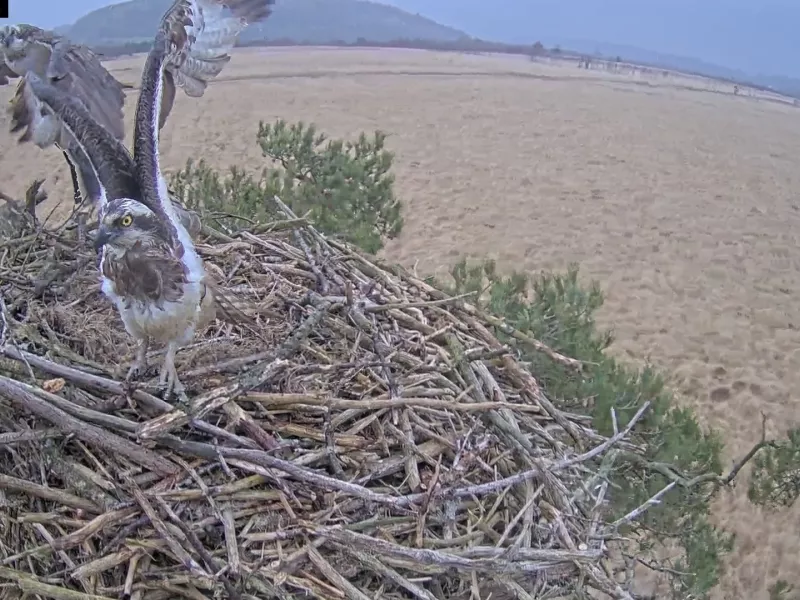
A partnership that works
With the camera feeds also serving as a vital route to collecting donations from viewers, the partnership between Cumbria Wildlife Trust and Axis looks set to continue. “We stuck with Axis for a reason,” enthuses Rob. “The support from Axis is essential, and because they’re great cameras there’s no need to change.”
Rob explains that the resiliency and reliability of Axis hardware is a vital attribute. “We have a limited window to work in, because when the birds are there, we can’t go near the cameras. They’re very robust, easy enough to use, and straightforward to manage remotely, which is very important.” The open landscape of Foulshaw Moss offers little shelter; each of the Trust’s camera enclosures is NEMA 4X rated for resistance against environmental factors like dust, water ingress, and damage from ice formation.
[Axis cameras] …are enabling people to be a part of the journey because it makes people feel like they can be part of it even if they physically can’t. It’s just really nice.
The Trust also employs Axis cameras to monitor other sites, highlighting barn owls at a local farm, coastal seal activity and red squirrels. And even local visitors to Foulshaw Moss, kept at a distance from the osprey roost, benefit from the camera footage. “We’ve got a little visitor hut in the car park,” says Keziah “and it’s got the camera stream showing. It’s great for accessibility, for those that can’t walk around the boardwalk, but people just come to look at the camera feed with such joy.”
Keziah says that accessibility is a priority for the Trust moving forward, and Axis cameras play a critical role in empowering people to stay in touch with Foulshaw Moss’ wildlife as its habitat continues to improve. “We’re enabling people to be a part of the journey. They get so attached to the birds, and we’ve had so many heartwarming comments thanking us, because it makes people feel like they can be part of it even if they physically can’t. It’s just really nice.”
Products & solutions
AXIS Q63 PTZ Camera Series
High-end outdoor-ready PTZ cameras with quick-zoom and laser focus
Learn moreGet in touch
Want to know how you can benefit from Axis solutions? Get in touch and we will help you.
Contact us